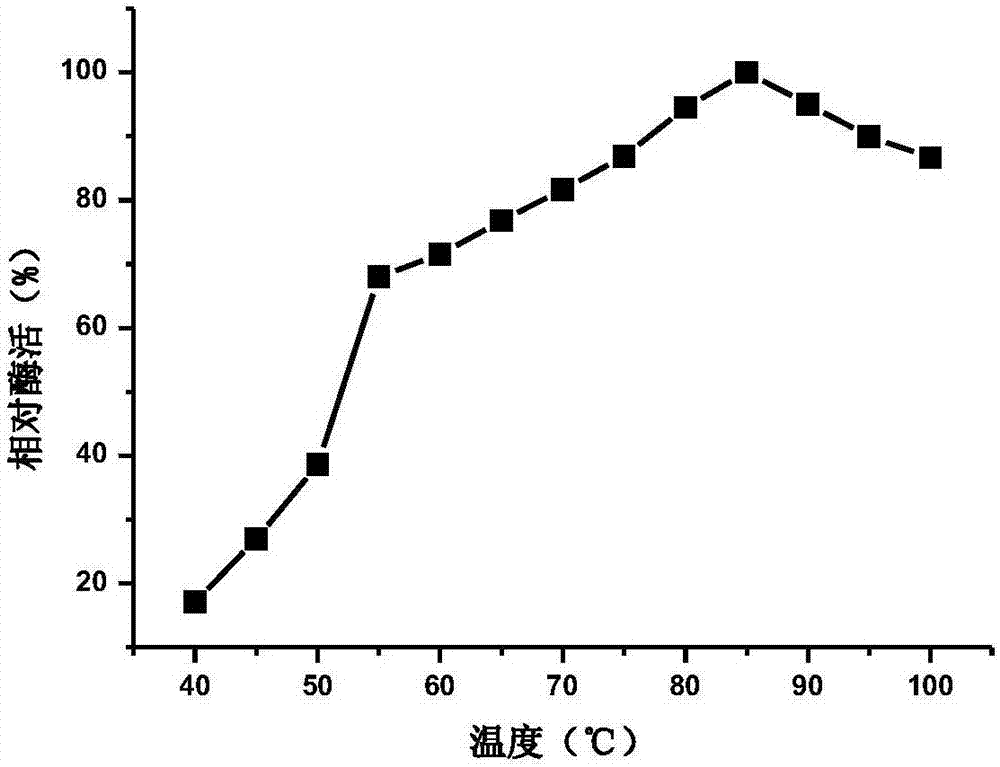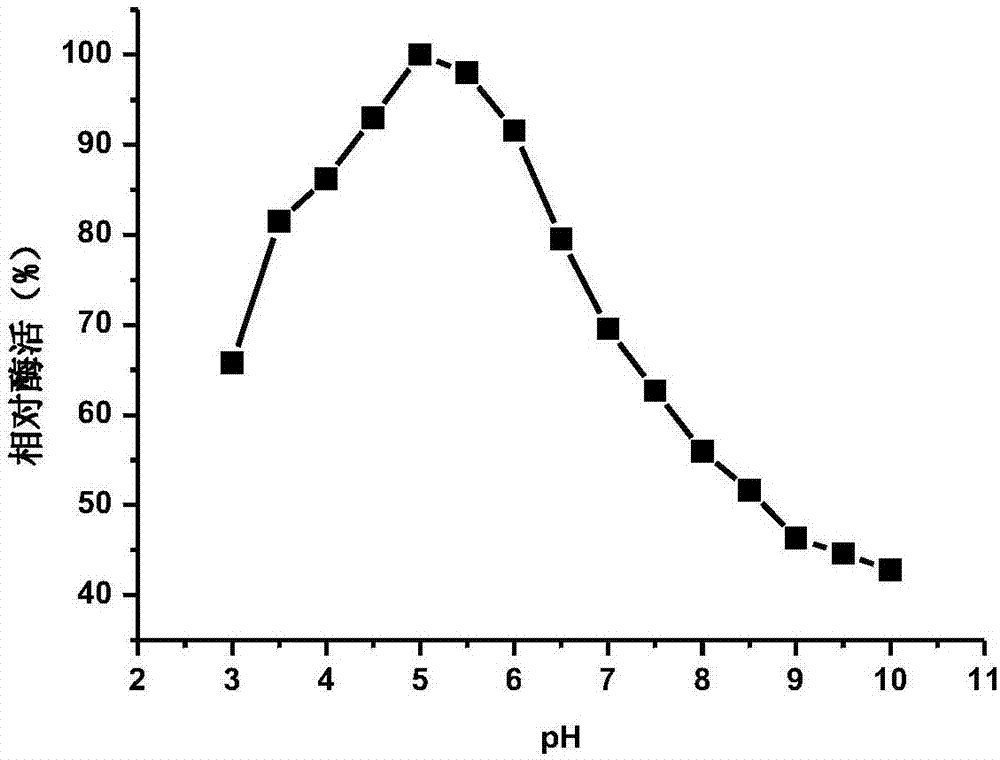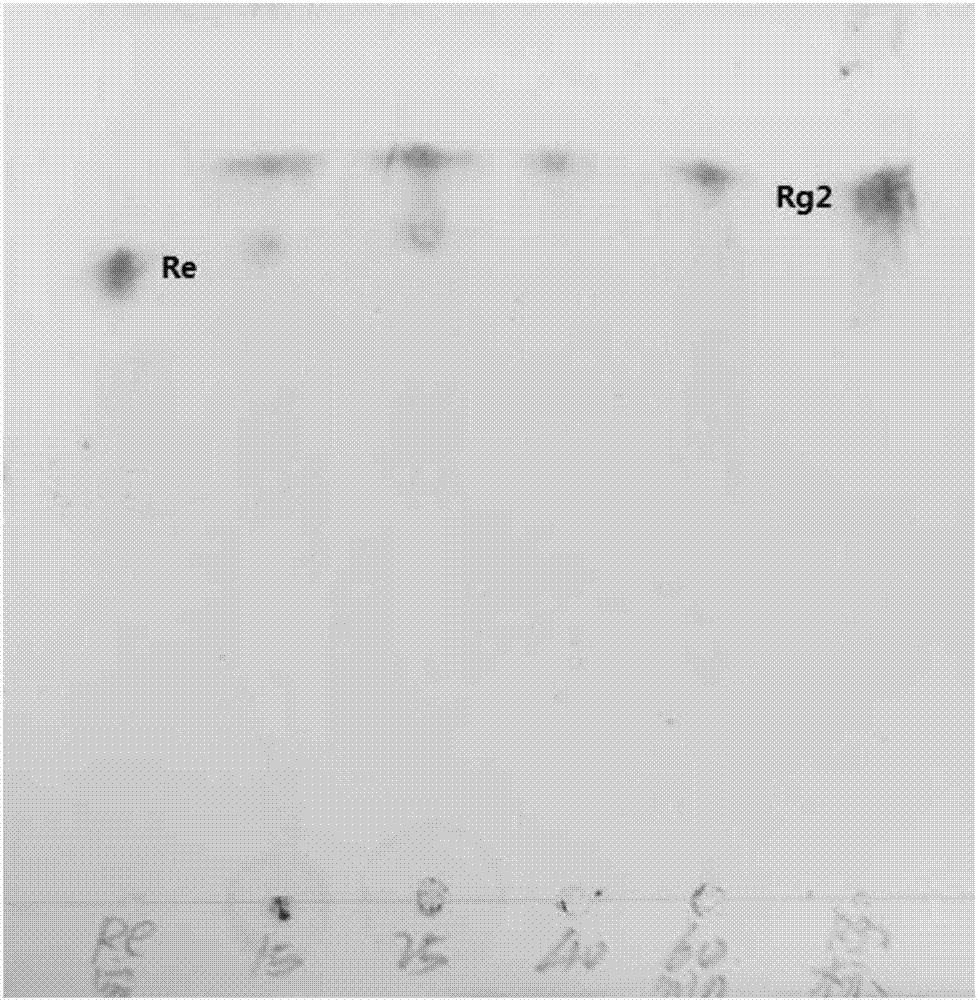Beta-glucosidase, preparation method and application thereof
A technology of glucosidase and ginsenoside, applied in the direction of botany equipment and methods, biochemical equipment and methods, applications, etc., can solve the problems of many by-products and harmful environment, and achieve less by-products, low cost and high yield high effect
- Summary
- Abstract
- Description
- Claims
- Application Information
AI Technical Summary
Problems solved by technology
Method used
Image
Examples
preparation example Construction
[0038] The present invention also provides a preparation method of β-glucosidase, the method comprising:
[0039] The DNA fragment shown in SEQ ID NO. 2 is inserted into an expression vector to obtain a recombinant vector, the recombinant vector is transformed into a host cell, the transformant is cultured, and β-glucosidase is obtained from the culture.
[0040] According to the present invention, the described preparation method steps are as follows:
[0041] Step 1: Take the genomic DNA extracted from Thermotoga neapolitana DSM 4359 as a template, use the upstream primer with the nucleotide sequence shown in SEQ ID NO.3 and the downstream primer with the nucleotide sequence shown in SEQ ID NO.4. PCR amplification to obtain the DNA molecule shown in SEQ ID NO.2; the amplification conditions are preferably: 95°C pre-denaturation for 4min, then 95°C for 50s, 55°C for 45s, 72°C for 1min 30s, a total of 30 cycles , and finally extended at 72°C for 10 min, the above PCR reaction...
Embodiment 1
[0051] Example 1 Preparation of β-glucosidase
[0052] The genomic DNA of Thermotoga neapolitana DSM 4359 (sourced from the German Collection of Microorganisms, No. 4359) was extracted and used as a template. P1 and P2 were used as primers. The primers were synthesized by Shanghai Sangon Bioengineering Technology Service Co., Ltd. The primer sequences as follows:
[0053] P1:
[0054] 5’-CGCGGCAGCCATATG GCTAGC ATGAAGATGGAAAAGGTGAATGA-3’
[0055] (forward), the underline indicates the Nhe I site (the P1 nucleotide sequence is shown in SEQ ID NO.3);
[0056] P2:
[0057] 5’-TTGTCGACGGAGCTC GAATTC TCACGGTTTGAATCTTCTCTCCT3’
[0058] (reverse), the underline indicates the Ecor I site (the P2 nucleotide sequence is shown in SEQ ID NO. 4);
[0059] Use the upstream primer with the nucleotide sequence shown in SEQ ID NO.3 and the downstream primer with the nucleotide sequence shown in SEQ ID NO.4 to carry out PCR amplification. Then 95°C for 50s, 55°C for 45s, 72°C for 1min ...
Embodiment 2
[0063] Example 2 Determination of the enzymatic properties of β-glucosidase
[0064] Enzyme activity was defined as the amount of enzyme required to catalyze the production of 1 μmol of p-nitrophenol (pNP) within 1 min.
[0065] 1. Determination of the optimal reaction temperature of β-glucosidase
[0066] The enzyme activity of the diluted enzyme solution at pH 5.0 and temperature of 40-100℃ was measured respectively. Three parallels were set for each temperature. The highest enzyme activity was set as 100%, and the relative enzyme activity was plotted against temperature. The result is as figure 1 shown.
[0067] from figure 1 It can be seen that the optimum reaction temperature of the β-glucosidase of the present invention is 85°C.
[0068] 2. Determination of the optimum reaction pH of β-glucosidase
[0069] 50 mM buffers (pH range 3.0-10.0) with different pH were taken to prepare 5 mM pNPG solution, 25 μL of diluted enzyme solution was added, and three parallels were...
PUM
 Login to View More
Login to View More Abstract
Description
Claims
Application Information
 Login to View More
Login to View More - R&D
- Intellectual Property
- Life Sciences
- Materials
- Tech Scout
- Unparalleled Data Quality
- Higher Quality Content
- 60% Fewer Hallucinations
Browse by: Latest US Patents, China's latest patents, Technical Efficacy Thesaurus, Application Domain, Technology Topic, Popular Technical Reports.
© 2025 PatSnap. All rights reserved.Legal|Privacy policy|Modern Slavery Act Transparency Statement|Sitemap|About US| Contact US: help@patsnap.com



